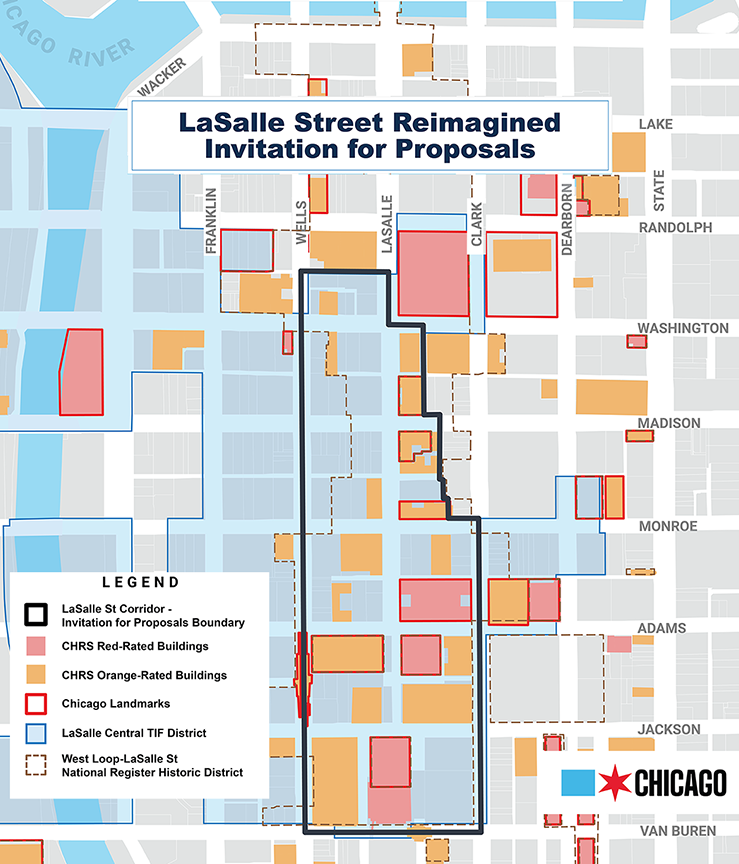IFP Map

The corridor has historically been a financial, banking, legal, and government office district with Classical and Art Deco styled buildings, many of which have grand interior lobbies and banking halls. Most of the corridor is on the National Register, part of the West Loop-LaSalle Street Historic District, and seven of the buildings are designated Chicago Landmarks. The district is in close proximity to multiple commuter rail lines, including the CTA elevated tracks that give the Loop community area its name. In recent decades, the commercial core of the central business district has shifted west to newer buildings along the Chicago River, the West Loop and Fulton Market. The shift to work-from-home during the COVID-19 pandemic reduced office and hotel occupancy and increased retail vacancy throughout the City but especially along the LaSalle corridor.
There are no affordable housing units on the corridor. Within the Loop, a one-bedroom rental unit is approximately 50% more expensive than citywide averages, and only eight affordable units required by the ARO are either completed or under construction, according to the Department of Housing.
